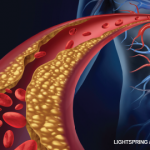According to legend, Hoffman’s father suffered from a severe form of arthritis and could not tolerate the crude form of salicylic acid that was being sold at the time. Pleading with his son to find a remedy, the younger Hoffman devoted the next four years of his life to this task. He succeeded in tweaking the chemistry of the reaction and produced a purer compound, acetylsalicylsaure, a tongue twister in any language. The drug was highly successful in alleviating his father’s pain.
Bayer’s chief pharmacologist, Dr. Heinrich Dreser, rejected this new formulation, erroneously believing it to be cardiotoxic. Perhaps Dr. Dreser was preoccupied with his own recent discovery of a novel and, at the time, commercially successful cough suppressant, heroin.3 Eventually, the pharmacologists at Bayer recognized the true value of their new product. Because its cumbersome name described the generic version of the drug, a new trade name had to be invented so that it could be patented. Dr. Dreser created aspirin, an acrostic that combined the letter a, for acetyl, spir for Spiraea (the genus of the willow bark tree) and—in, a popular suffix for drugs at the time.
The potent antiinflammatory, analgesic and antipyretic properties of aspirin made it one of the best-selling drugs around the world. Rheumatologists embraced it, and aspirin became the mainstay of therapy for virtually all of the arthritic disorders for decades. Many of us may recall being taught how to titrate a patient’s aspirin dose based on the presence or absence of tinnitus, a hallmark sign of salicylate toxicity.
The Dawning of a New Era
In those simpler therapeutic times, aspirin ruled. But we recognized that aspirin was far from perfect. Its short half-life required frequent dosing, which resulted in a heightened frequency of gastrointestinal side effects. Following Vane’s elucidation of prostaglandin synthesis and the role of the cyclooxygenase enzyme pathways, a dizzying array of new nonsteroidal antiinflammatory drugs (NSAIDs) came to market.
Each successive product touted its purported superior clinical efficacy and reduced risk for gastrointestinal adverse events, particularly peptic ulcer disease, gastric perforation and bleeding. In the U.S., it was estimated that these events were responsible for about 8,000 deaths annually. Not surprisingly, as we were doling out the newest NSAIDs, we focused on our patients’ bellies and bowels. Perhaps we should have looked elsewhere: to their hearts and blood vessels.
For rheumatologists, the advent of the more selective cyclooxygenase (COX) inhibitor drugs was a game changer. Their development was based on the premise that these enzymes, critical to prostaglandin formation, could be sorted into either good or bad forms. By selectively blocking the bad form (COX-2), an ideal antiinflammatory benefit could be provided to our patients while sparing them the deleterious consequences of blocking the good form (COX-1), considered essential to maintaining several critical body functions. For example, we could now eliminate the adverse gastrointestinal side effects associated with the older, less selective NSAIDs that populated the market.

